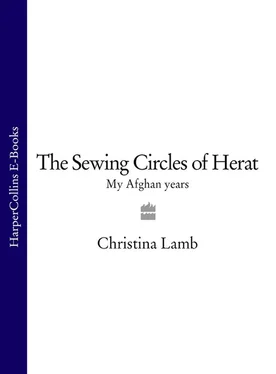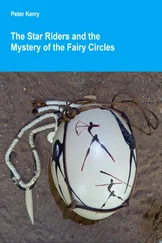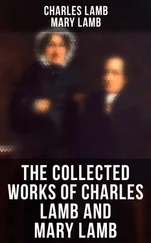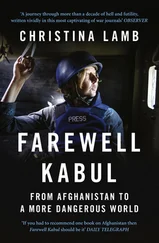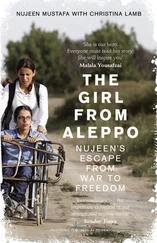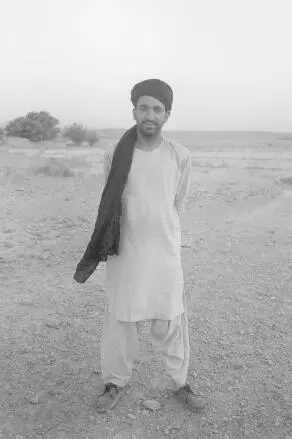
Hamid Karzai in Kandahar, 1988.
Our journey began in Quetta, a small lawless town centred round a bazaar of small shacks from which moneychangers somehow sent money all round the world, merchants displayed sacks of cumin and saffron, and reams of bright silks, and where men wore shirts embroidered with tiny mirrors and jewelled sandals with high heels. It seemed on the very edge of the earth, surrounded by the rifts and caramel-coloured escarpments of the Baluchistan desert, and at the time the only hotel was the New Lourdes. A colonial place in the cantonment with a lush lawn that looked as if it should have peacocks, its rooms did not appear to have seen a duster since Pakistan’s creation in 1947 and were heated by complicated Heath Robinson-style boilers of brass pipes and tin funnels that emitted periodic roaring noises sending the whole contraption rattling. Flushing the toilet flooded the room and the only light came from a lamp with no plug, just bare wires twisted straight into sockets.
My fair hair, green eyes and pale skin made it very hard for me to disguise myself as an Afghan guerrilla and on previous trips across the border, I had travelled as a woman refugee, my face and body hidden by a burqa, and sometimes provided with a small child to hold my hand for authenticity. But the Mullahs Front would apparently be a laughing stock in Kandahar if a woman was seen amongst them so this time I went dressed the same as the fighters I was travelling with, in shalwar kamiz, loose pyjama trousers made of many yards of cotton which hang in folds from the hips tied with pyjama cord and a long shirt, and heavily turbaned, with a grey embroidered Kandahari shawl thrown carelessly over the shoulder.
As always with Afghanistan, the journey, which had been delayed for days, finally started in a great hurry in the dawn hours then involved endless waiting, changing vehicles five times. I began to sympathise with Frank Martin, an Englishman who worked from 1895–1903 as Engineer-in-Chief to king Abdur Rahman then his son Habibullah, and whose account of his travels into the country in the party of an Afghan prince I had been reading. ‘It is not in the habit of the people to rush things,’ he wrote. ‘Their custom is instead to put off all they can until tomorrow, or the day after that for preference.’ Unlike the exasperated Mr Martin, we did not have to wait for a man with a drum to go out in front of us, nor another carrying a huge gold embroidered umbrella as sunshade to protect princely skin. Even so the sun was setting by the time we ended up in a Pajero jeep heading out of town, the desert-mountains rising smudged and Sphinx-like in perfect Turner colours either side of us. Apart from Hamid, my travel companions were Abdul Razzak, one of Kandahar’s leading commanders known as the Airport Killer for his daring raids on the airport, and Ratmullah, a chubby sub-commander with an impressively twisted turban, a loud belly laugh, twinkling black eyes and bushy black beard.
Deep into the night, we climbed the Khojak pass, passing trucks gaudily painted with mountain scenes or Pathan beauties and inlaid with intricate metalwork which hid secret compartments. We were in tribal territory and the only industry in these barren lands was smuggling – and abduction. For most of the way the road intertwined with the British-built railway as it twisted in and out of the mountains. According to local legend, the chief engineer committed suicide because he had made a bet with his colleague leading the drilling team from the other side that they would meet in the middle on a certain date. When they did not he thought he had miscalculated and their two tunnels had failed to join up. The day after his death the tunnels met and the 3.2-mile-long Khojak tunnel, the longest in South Asia, now graces Pakistan’s five-rupee note.
It was almost midnight by the time we crossed the border to be greeted by the red flares of the heavy guns from nearby Spin Boldak, which the mujaheddin were trying to capture. The blurred face of Yunus Khalis beamed down from a calendar on the wall of the compound where we stopped for the night. One of the fundamentalist leaders, Khalis was a ferocious henna-bearded seventy-year-old with a sixteen-year-old wife, and virulently anti-royalist. Yet Hamid was welcomed with great enthusiasm, everyone coming to pay respects. As we squatted on the floor for dinner with a group of large men after the usual long guttural exchange of Pashto greetings, Abdul Razzak, who was himself a member of Khalis, explained, ‘parties mean nothing here. We just go with whoever gives us arms. None of the Peshawar leaders would dare come here.’
The men laid their Kalashnikovs down by their sides as boys too young to fight brought a pitcher of water and grubby hand-towel for us to wash, going round the room in order of seniority, serving me last. The only sound was the smack of lips and tongues as we scooped greasy goat stew out of an aluminium bowl with stretchy Afghan bread, washing it down with curd in iced water. On the dried-earth walls our silhouettes flickered in the light of the oil lamp.
It didn’t seem very long after we had gone to sleep, huddled on flea-ridden cushions under quilted coverlets in shiny pink and red material, when we were woken by wailing. It was prayer time. Outside, where the daystar had not yet faded from the sky, the men were laying down their shawls on the ground and prostrating themselves, shawls flapping in the wind and rockets thundering in the dust not far away as they held their palms in front of their faces and mouthed the words ‘Bismillah ar-Rahman ar-Rahim , in the name of Allah, the Beneficent, the Merciful.
The boys brought breakfast – a pot of green tea thick with sugar, which they poured into small glasses, boiled sweets from Iran, and a tray of hard bread left from dinner, as well as dry lentils, which the commanders cracked noisily between their teeth. I went outside to brush my teeth in water left from the previous night’s hand-washing. Abdul Razzak and some of his mujaheddin were crouched in the early sun, brushing their teeth with twigs or clipping facial hair, using their small round silver snuffboxes as mirrors.
We set off through the desert, not the majestic sands of T.E. Lawrence or Wilfred Thesiger, but endless grey plains which absorbed and amplified the beating sun and abandoned villages that had been turned into battlefields scattered with spent ammunition. In one village we got out and wandered around, identifying the bombed-out remains of the clinic, the prison and the school, one wall covered with children’s charcoal drawings of Soviet helicopters shooting down stick people. The mujaheddin leapt onto the burnt-out hull of a tank for me to photograph them, striking poses with their Kalashnikovs and rocket-launchers. Two ragged children suddenly emerged from one of the ruins, hand-in-hand, their faces and eyelashes grey with dust, the only survivors, begging for food. I could not imagine what they were living on and they fell upon my packet of emergency digestive biscuits, stuffing them into their mouths.
We were supposed to follow in each other’s footprints because of land-mines but the dust kept blowing them away. There was dust everywhere, coating my clothes, in my hair, my ears, my fingernails and mouth, the wind lifting it up in columns so that sometimes it was difficult to see, and giving everything a gritty feel. It was at least 40°C, and my thirst made my head ache, but instead of water Ratmullah appeared clutching marigolds which he shyly presented me for my hair and laughed when I tucked them behind my ears. Like many mujaheddin, I often saw him walking around casually clutching a flower, sometimes hand-in-hand with a friend. Later, when I got to know him better, I asked him why they loved flowers so much and he replied; ‘because they are peace and beauty and everything we have lost’.
Читать дальше
